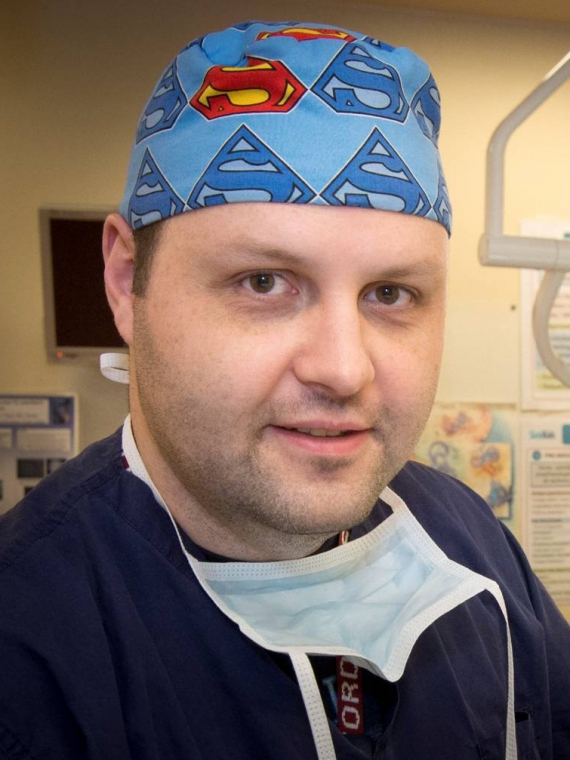Jason T. Maynes
Assistant Professor
BSc, University of Calgary, 1999
PhD, University of Alberta, 2006
MD, University of Alberta, 2006
Postdoc, Los Alamos National Lab, 2002-2003
Postdoc, Washington University in St. Louis, 2011
Internship in Pediatrics, Washington University in St. Louis/Barnes-Jewish Hospital/St. Louis Children's Hospital, 2006-2008
Residency in Anesthesiology, Washington University in St. Louis/Barnes-Jewish Hospital/St. Louis Children's Hospital, 2008-2011
| Address | Department of Anesthesia and Pain Medicine Hospital for Sick Children 555 University Ave Toronto, ON M5G 1X8 |
| Lab | Maynes Lab |
| Lab Phone | 416-813-7654 ext. 328777 |
| Office Phone | 416-813-5934 |
| jason.maynes@sickkids.ca |
Research Lab

We have 14 current lab members including research associates, technicians, graduate students and clinical fellows. We have over 40 collaborators including clinicians, surgeons, epidemiologists, engineers and basic scientists.
Lab methodologies span all spectrums, our mantra is that we do what it takes to get the work done. This includes, but is not limited to, X-ray crystallography, NMR, mammalian cell protein expression, fluorescence spectroscopy, high-resolution fluorescence imaging, high-content imaging, robotics, micro-injection, stem cell models and animal models.
Learn more: Maynes Lab
Research Description
Models for Cardiac and Neuronal Drug Toxicity and New Methods of Improving Cardiac Function
The research in my lab focuses on three main areas that attempt to combine my clinical training in paediatrics and anaesthesia with my research training in biophysics: (1) the mechanism of anaesthetic action and anaesthetic off-targets, (2) proteins involved in mitochondrial dynamics, (3) cardiac disease and cardiac contractility and, (4) high-content imaging and image analysis.
Anaesthetic agents have poor affinities for their clinical receptors, leading to potential off-target interactions on the cellular level and side-effects for the patient. Accumulating clinical evidence shows that anaesthetic agents can have adverse neuro-cognitive and neuro-behavioral effects on children. The exact mechanism of this effect is unknown but our lab has shown that pharmaceuticals used in a common paediatric anaesthetic all cause mitochondrial membrane potential alterations, adverse mitochondrial morphology changes and damage to the mitochondrial genome. This can lead to persistent mitochondrial dysfunction and may lead to the neurological effects of anaesthetics on children, along with delayed wound healing and post-operative recovery. We are continuing to investigate the effect of anaesthetics mitochondrial function, agents that can mitigate these effects and other potential ways to deliver anaesthetic safely to paediatric patients.
Mitochondrial dynamics is an important cellular process where damaged mitochondrial components can be discarded, new functional mitochondrial units generated and the mitochondrial genome repaired. The mitochondrial processes of fusion and fission are also involved in autophagy and apoptosis. We are investigating the structural basis of mitochondrial fission and fusion using biophysical techniques. Our current interest is focused on the role of the proteins Mitochondrial Fission Factor (Mff) and Dynamin-related Protein-1 (Drp-1) in mitochondrial fission and how post-translational modification affects the function of these two proteins.
To study mitochondria and other cellular processes we employ high-content imaging. Unlike traditional confocal microscopy, we image thousands of cells at a time using 96- or 384-well plates and use automated image processing algorithms to determine specified metrics from every cell in every image. This removes the traditional bias associated with manual characterization of confocal images. We have developed machine learning algorithms that automatically identify, quantify and then classify mitochondrial shape and function in a cell population of interest. We have also extended these techniques to other disease phenotypes of relevance to paediatric anaesthesia including pulmonary stenosis, dilated cardiomyopathy and chemotherapy-induced cardiac dysfunction.
Courses Taught
Extra-Departmental Courses
STF111 Structure and Function (medical school)
MNU111 Metabolism and Nutrition (medical school)
Publications
View all publications on PubMed



